Jeroen Wijering is the creator of the incredibly successful JW Player, which has generated millions of downloads since its release in 2005. In 2007 he co-founded LongTail Video, focusing on a full-fledged online video platform that includes encoding, delivery, syndication and advertising.
The mobile video space has begun to consolidate. In early November, Adobe announced it would stop developing its Flash Player for mobile devices (read: Android). Going forward, HTML5 will be the only method to play back video on mobile phones and tablets.
This is a big win for Apple, the company to most strongly oppose Flash over the last few years. The company is indeed beginning to dictate the industry’s future. In addition to defeating Flash in the battle for video playback, Apple continues to innovate with its H.264 codec, since WebM is still nowhere to be found.
The company has also taken the lead in video streaming. Apple’s homegrown streaming protocol, HTTP Live Streaming (HLS), has always been the one and only way to stream content to iDevices. Now, due to the popularity of iOS, many tool vendors and even competing platforms are starting to support it too.
Playback and Encoding
According to Adobe, Android 4 (Ice Cream Sandwich) will be the last mobile platform to use a Flash plugin. The OS is launching without one, though. Given Flash’s terrible track record with mobile, it wouldn’t be surprising if it never arrives. Therefore, video publishers should ensure their Android video works in HTML5.
In terms of encoding, the H.264 codec is baked into the CPU of every single mobile phone today, while WebM is still confined to a software-only (and non-HTML5) implementation on some Android devices. Google is working on hardware, but the path from reference designs to phone integration, and eventually market share, is a long one.
Until WebM hardware decoding is supported by a decent slice of mobile devices, video publishers will continue to focus on H.264. Seeing this, Google continues to support H264 in Chrome, despite announcing that it would drop it almost a year ago. For all intents and purposes, H.264 is the baseline codec for HTML5 video at present.
What Is HLS?
The acronym HLS stands for HTTP Live Streaming. It is a protocol that allows publishers to stream video using plain HTTP web servers, as opposed to using expensive and hard to scale dedicated streaming servers. This streaming is achieved by chopping up the video hosted on the server into small fragments (usually 10 seconds), and then stitching them together again in the browser. The browser only requests the next fragment in line, instead of loading the entire video and wasting bandwidth, which is how vanilla HTML5 operates. See the diagram below for a single fragmented stream.

A video streamed through HLS is usually encoded into multiple qualities, ranging from a mere 180px to full-blown 720px and beyond. Every time the browser returns to the server to load the next fragment, it decides which quality level to load. Thus, the browser continuously adjusts the quality of the stream to best match the available bandwidth. This is hugely important in mobile, because devices perpetually swap between 2G, 3G, 4G and Wi-Fi connections. See diagram below for an adaptive fragmented stream.

In addition, the fragments of HLS streams can be encrypted for secure delivery. Users who intercept these fragments will not be able to play them at all. This is a big security advantage over plain HTML5 video, in which every savvy user can find the URL of a video and download for his own use.
Why Use HLS?
Today’s wide usage of the HLS protocol is a result of iOS success. Apple designated the protocol as the one and only way to stream video to the iPhone and iPad. No Flash, no Silverlight, no RTP or RTSP. On top of that, HLS is required for in-app video. Even simple MP4 downloads, which work for in-browser playback, are not allowed in iOS apps.
Every major publisher, therefore, needs to use the HLS protocol. Every major encoding tool (e.g. Encoding.com or Sorenson Squeeze) and streaming server (e.g. Flash Media Server or Wowza Media Server) supports it nowadays. This broad ecosystem, in turn, now has many devices that support the protocol as well. Nearly every popular set-top box (Xbox, PS3, Roku, Apple TV, Boxee) can play HLS, as will Android phones running the new Ice Cream Sandwich release.
Are there are any competing protocols? Absolutely. Dynamic Streaming from Adobe is one, but requires the (now desktop only) Flash plugin. Also, Smooth Streaming from Microsoft requires Silverlight, another desktop-only (and soon to retire?) plugin. HLS is deployed on top of HTML5, which is easily implemented by both browsers and devices.
A standardization effort is on its way as well, in the form of MPEG DASH (Dynamic Adaptive Streaming over HTTP). Supported by many companies (including Apple) and boasting a rich set of features, DASH may well become the single video streaming protocol to replace HLS, as well as RTMP and RTSP. However, progress is slow and broad support is years away.
The Apple Standard
For the foreseeable future, we’ll watch our mobile video the Apple way: HTML5 embedded, H.264 encoded and HLS streamed. Any platform seeking broad support for quality video (Windows Phone?) must implement HLS. And any publisher seeking mobile viewers must encode in H.264, embed using HTML5 and stream using HLS.
Is this a bad thing? Quite the contrary. The alternative is fragmentation: multiple plugins, multiple codecs and multiple protocols. This is an annoyance for large media corporations; it increases their development and delivery costs. However, it’s disastrous for smaller video publishers, since the companies lack the resources to build and support multi-platform video delivery. Ultimately, that is a detriment to mobile video. Like the web in general, mobile video thrives on broad availability of a wide variety of content.
A more open set of standards (WebM and DASH) should come in time. For now though, Apple is the standard.
More About: apple, contributor, features, Flash, iOS, mobile video, Video
For more Mobile coverage:
- Follow Mashable Mobile on Twitter
- Become a Fan on Facebook
- Subscribe to the Mobile channel
- Download our free apps for Android, Mac, iPhone and iPad






 TIOBE Software has
TIOBE Software has 


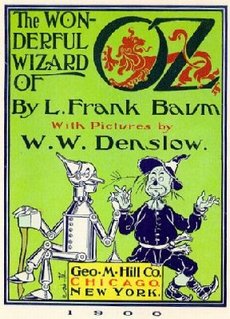 Once upon a time, fairy tales were dark fables designed to scare children into good behavior. This is the story of one American author who thought kids deserved better.
Once upon a time, fairy tales were dark fables designed to scare children into good behavior. This is the story of one American author who thought kids deserved better.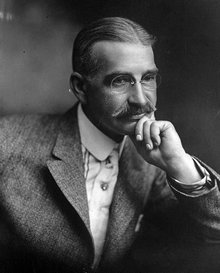 Lyman Frank Baum was born in 1856 in Chittenango, New York. As a child, his weak heart limited his capacity for rough-and-tumble play. So, despite being the seventh of nine kids, he spent most of his childhood alone, indoors, and dreaming.
Lyman Frank Baum was born in 1856 in Chittenango, New York. As a child, his weak heart limited his capacity for rough-and-tumble play. So, despite being the seventh of nine kids, he spent most of his childhood alone, indoors, and dreaming.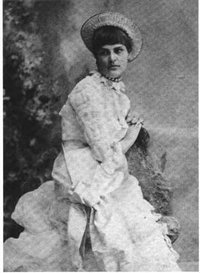 Frank married Maud in 1882, but troubles were around the corner. Baum’s theater company went belly-up, and without local prospects, he looked west for opportunity. In 1888, he moved his family to the Dakota Territory, where he opened a store in the town of Aberdeen. (Years later, when Baum wrote descriptions of the Kansas prairie in The Wonderful Wizard of Oz, he was actually describing South Dakota.) His shop, Baum’s Bazaar, sold Chinese paper lanterns, Bohemian glass, gourmet chocolates, and other exotic items. But Baum overestimated the frontier’s demands for novelty shopping. In a few short years, he’d gone bust yet again.
Frank married Maud in 1882, but troubles were around the corner. Baum’s theater company went belly-up, and without local prospects, he looked west for opportunity. In 1888, he moved his family to the Dakota Territory, where he opened a store in the town of Aberdeen. (Years later, when Baum wrote descriptions of the Kansas prairie in The Wonderful Wizard of Oz, he was actually describing South Dakota.) His shop, Baum’s Bazaar, sold Chinese paper lanterns, Bohemian glass, gourmet chocolates, and other exotic items. But Baum overestimated the frontier’s demands for novelty shopping. In a few short years, he’d gone bust yet again.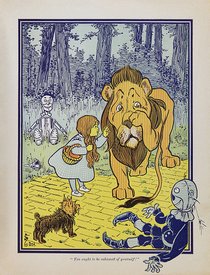 As a child, Baum had loved the European fairy tales of the Brothers Grimm, but he loathed the dark, grisly endings. He envisioned a new American fairy tale in which ingenuity and spunk paid off. In Baum’s words, he wanted to create a world where “wonderment and joy are retained, and the heartache and nightmares left out.”
As a child, Baum had loved the European fairy tales of the Brothers Grimm, but he loathed the dark, grisly endings. He envisioned a new American fairy tale in which ingenuity and spunk paid off. In Baum’s words, he wanted to create a world where “wonderment and joy are retained, and the heartache and nightmares left out.”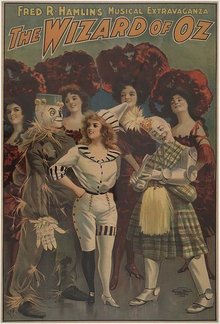 In 1902, Oz was transformed into a Broadway musical, shortened simply to The Wizard of Oz.
In 1902, Oz was transformed into a Broadway musical, shortened simply to The Wizard of Oz.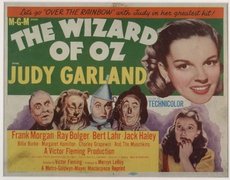 In 1939, the Oz legacy hit a turning point when MGM released The Wizard of Oz movie. Based on Baum’s original storyline, the plot and characters remained relatively faithful to the book, although there were plenty of changes, too. Most of the quotables (“And your little dog, too!”) were Hollywood additions, as were the musical numbers and dancing little people. There were some changes to the story, as well. Dorothy’s slippers, which were silver in the book, were changed to ruby in the movie to show off the new technology of color film.
In 1939, the Oz legacy hit a turning point when MGM released The Wizard of Oz movie. Based on Baum’s original storyline, the plot and characters remained relatively faithful to the book, although there were plenty of changes, too. Most of the quotables (“And your little dog, too!”) were Hollywood additions, as were the musical numbers and dancing little people. There were some changes to the story, as well. Dorothy’s slippers, which were silver in the book, were changed to ruby in the movie to show off the new technology of color film. (Image from the
(Image from the 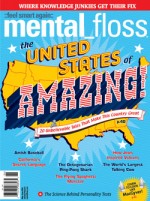 The article by Kelly K. Ferguson is reprinted from the
The article by Kelly K. Ferguson is reprinted from the  The folks at BestVendor.com interviewed 500 developers and compiled this profile of the tools that they actually use. A few stalwarts predominate, such as Git, Eclipse, AWS, Dropbox, MySQL, and Google Analytics. But there were a few surprises too, including 23% using Notepad++ as their text editor and 8% using Heroku to host their apps. Many of the categories are wide open. All of those surveyed are from companies of less than 100 people from around the world.
The folks at BestVendor.com interviewed 500 developers and compiled this profile of the tools that they actually use. A few stalwarts predominate, such as Git, Eclipse, AWS, Dropbox, MySQL, and Google Analytics. But there were a few surprises too, including 23% using Notepad++ as their text editor and 8% using Heroku to host their apps. Many of the categories are wide open. All of those surveyed are from companies of less than 100 people from around the world.

